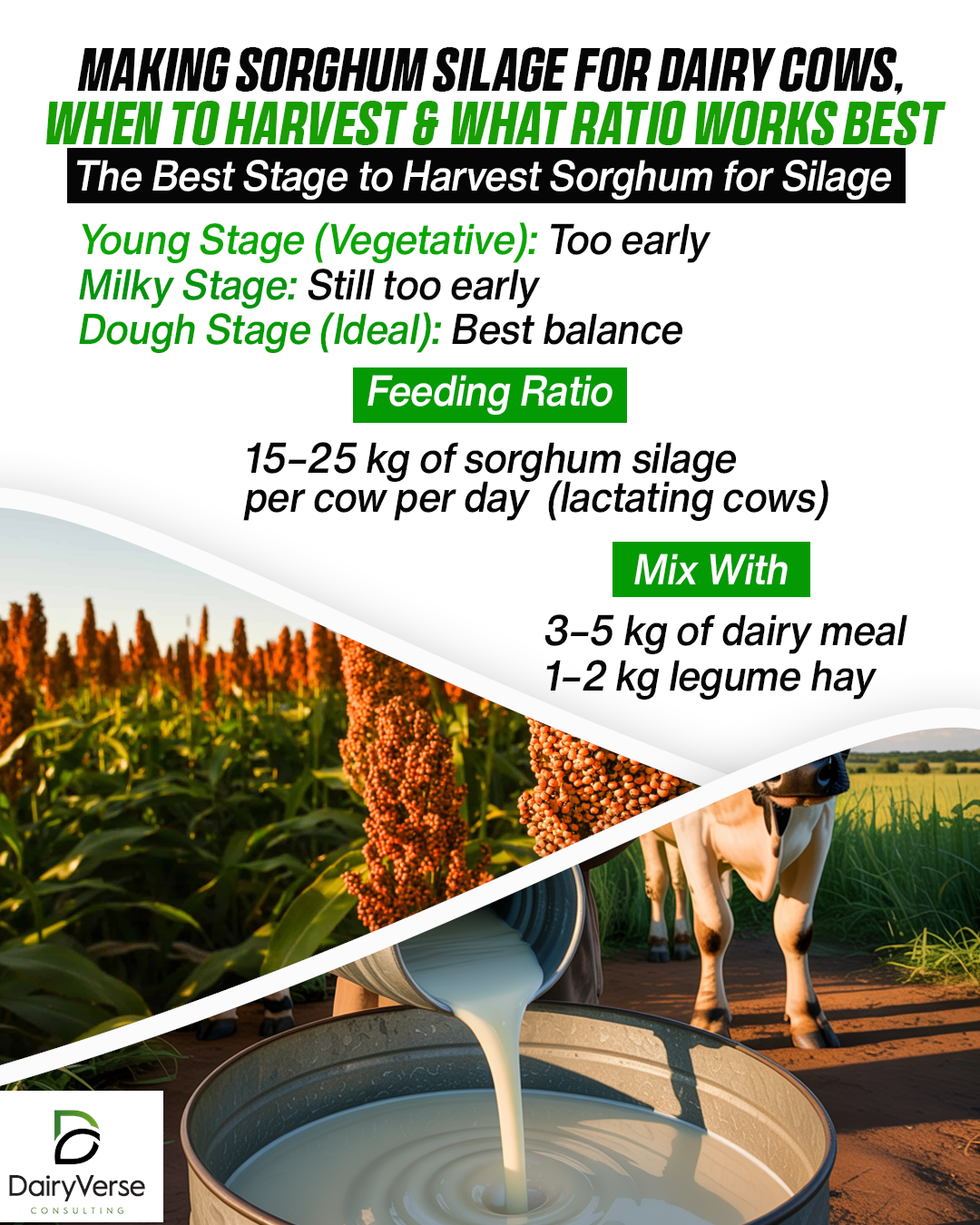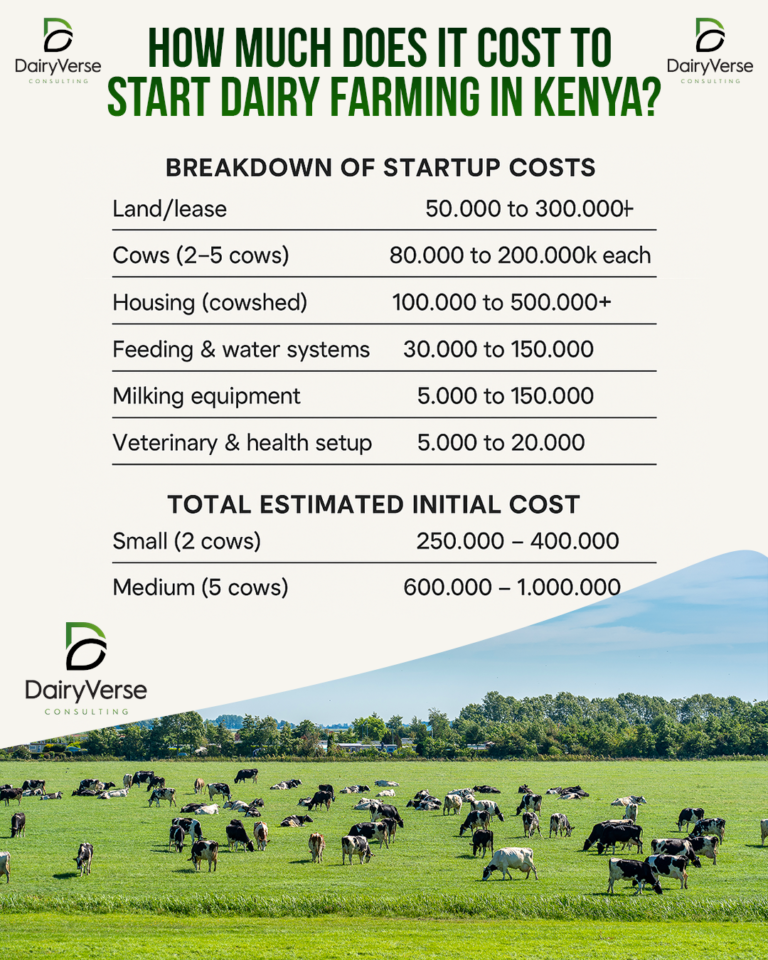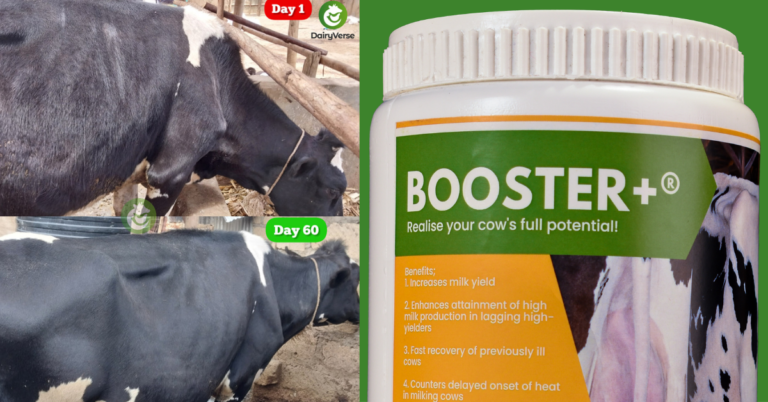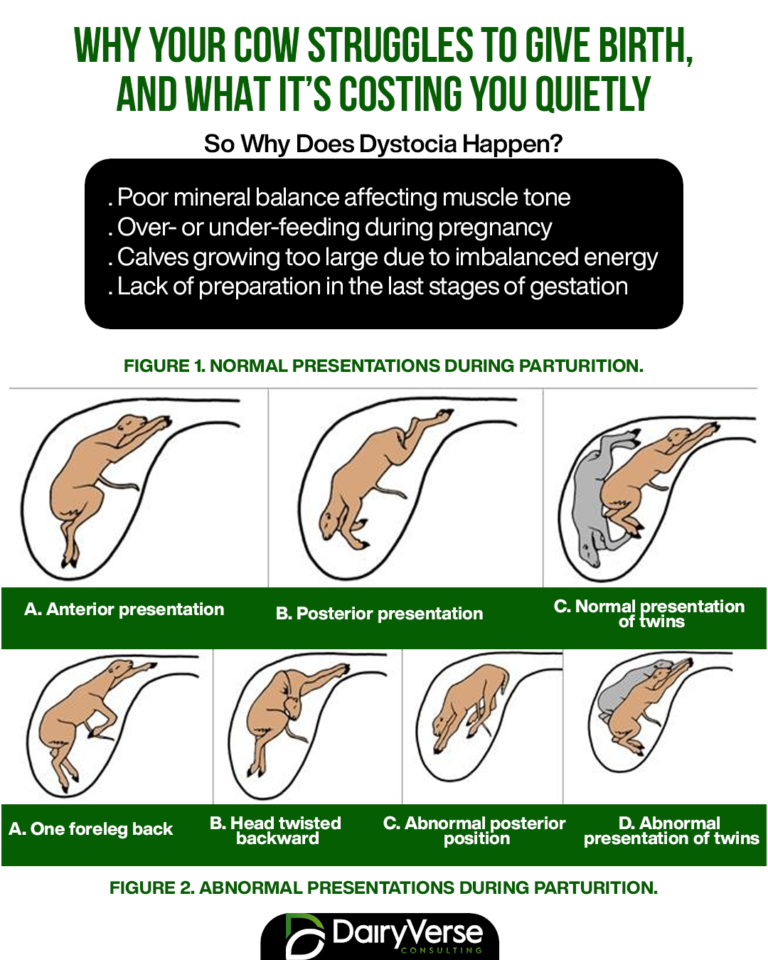Making Sorghum Silage for Dairy Cows, When to Harvest & What Ratio Works Best.
🌾 The Best Stage to Harvest Sorghum for Silage
To get the most energy and digestibility from your sorghum, timing is everything. Here are the three main stages and what they mean:
- Young Stage (Vegetative):
- Too early.
- High water content, low sugar and energy.
- Poor fermentation, watery silage.
- Milky Stage:
- Kernels are soft and milky when pressed.
- Still too early—can lead to lower dry matter and unstable silage.
- Dough Stage (Ideal): ✅
- Grains feel dough-like, not runny or too hard.
- Best balance of sugar, dry matter, and energy.
- Ensures proper fermentation and nutrient density.
🔸 Dairyverse Tip: Harvest sorghum for silage when it reaches the soft-dough to early-dough stage for best results.
🧪 How to Make Good Sorghum Silage
Here’s a quick guide:
- Chop into short pieces (about 1–2 cm length)
- Pack tightly in a silo, pit, or drum to remove air
- Cover properly with airtight plastic to block oxygen
- Let it ferment for 21–30 days before opening
Optional but beneficial:
- Add molasses or fermenters to improve sugar levels and fermentation
- Mix with legume fodder (like lucerne or desmodium) for protein boost
🐄 Feeding Ratio: How Much Sorghum Silage to Give?
A good feeding ratio depends on your cow’s weight, milk production, and other feeds available.
But here’s a general guide for lactating cows:
- 15–25 kg of sorghum silage per cow per day
- Combine with:
- 3–5 kg of dairy meal (or another protein source)
- 1–2 kg legume hay if possible
- Clean water & minerals freely available
Remember, silage is energy-rich but low in protein, so balance is key.
📌 Final Word from Dairyverse
Feeding sorghum silage can greatly support milk production, especially when:
- Harvested at the right stage
- Stored and fermented well
- Balanced with protein and minerals







